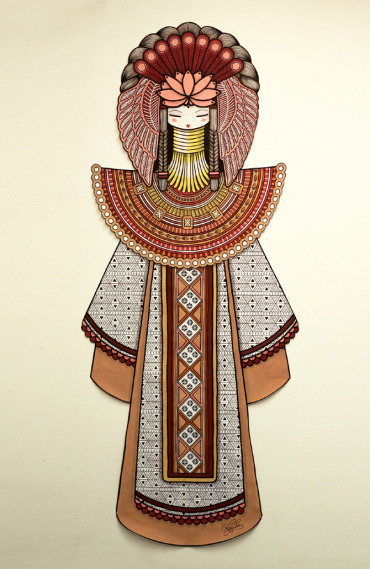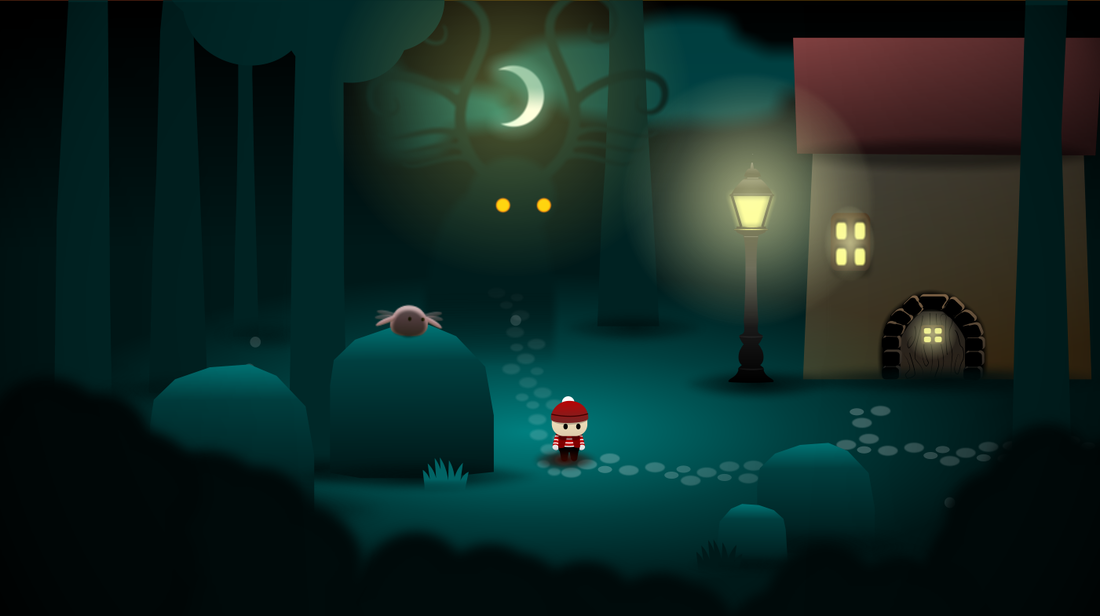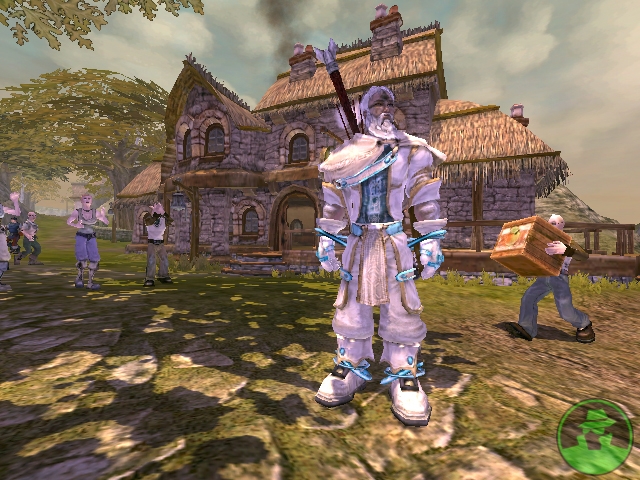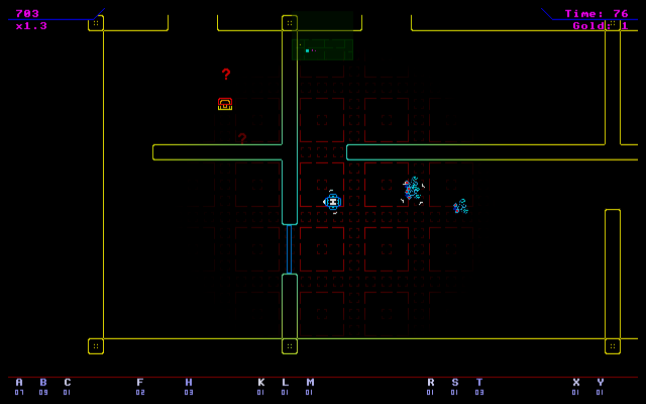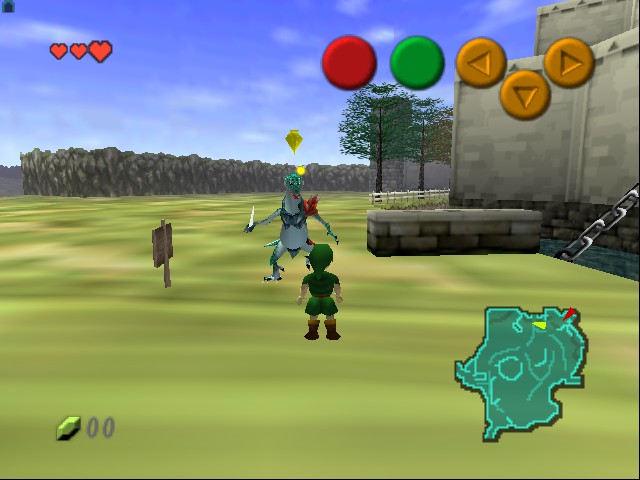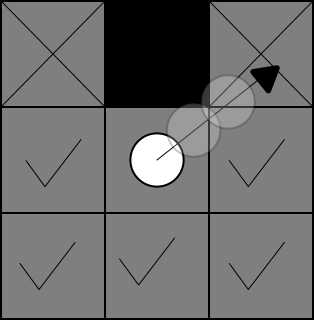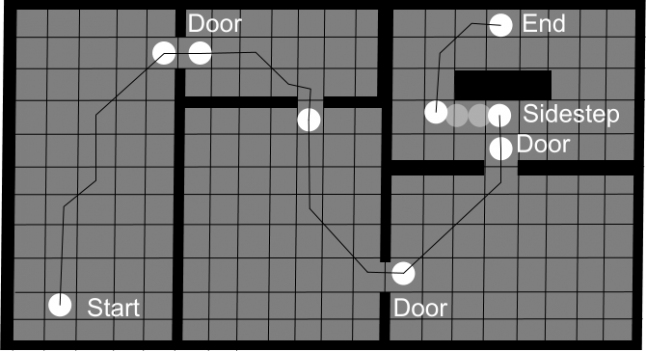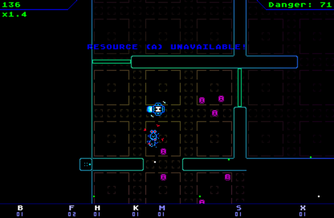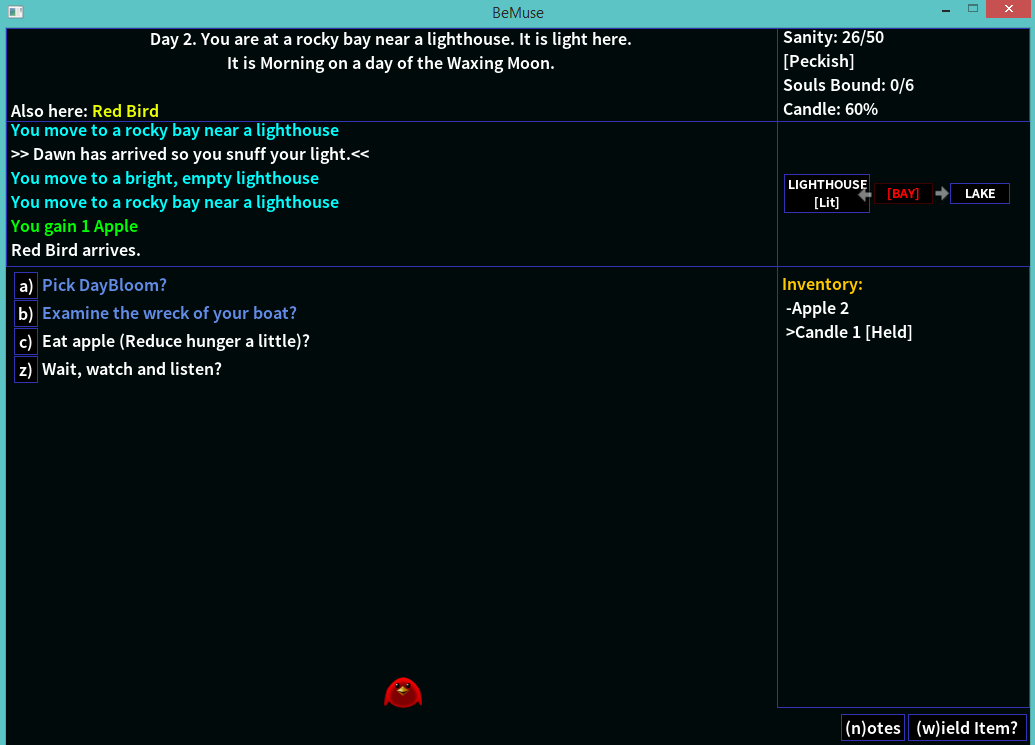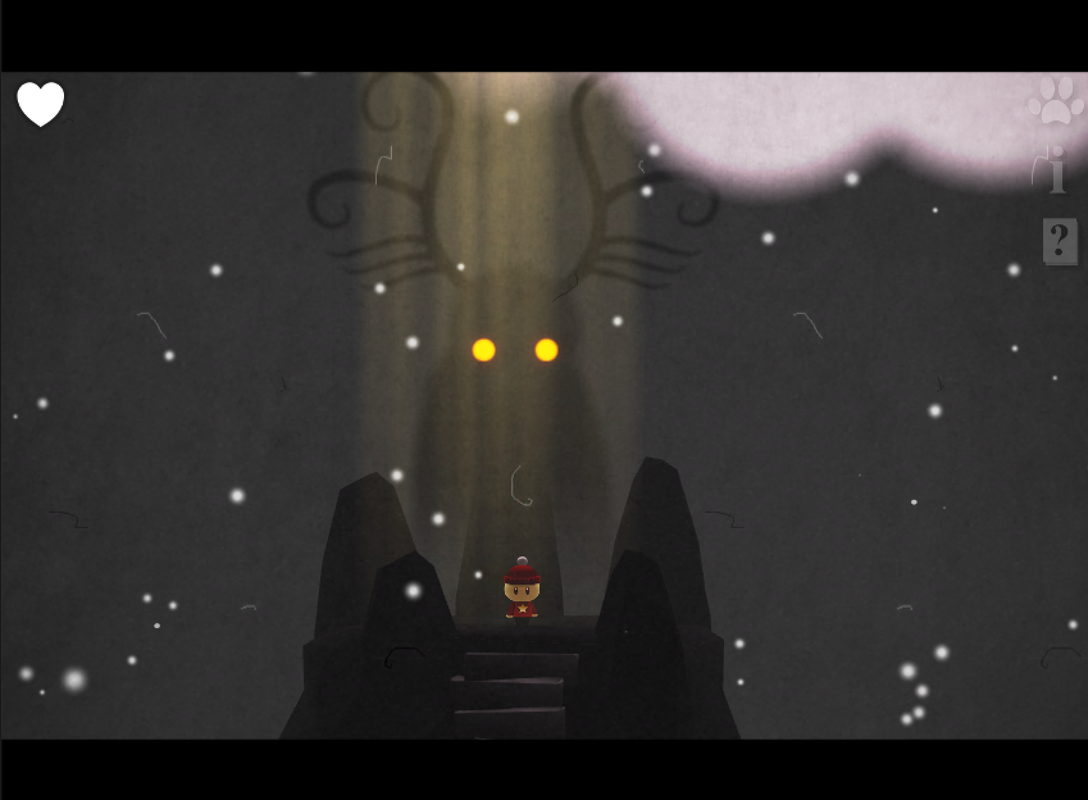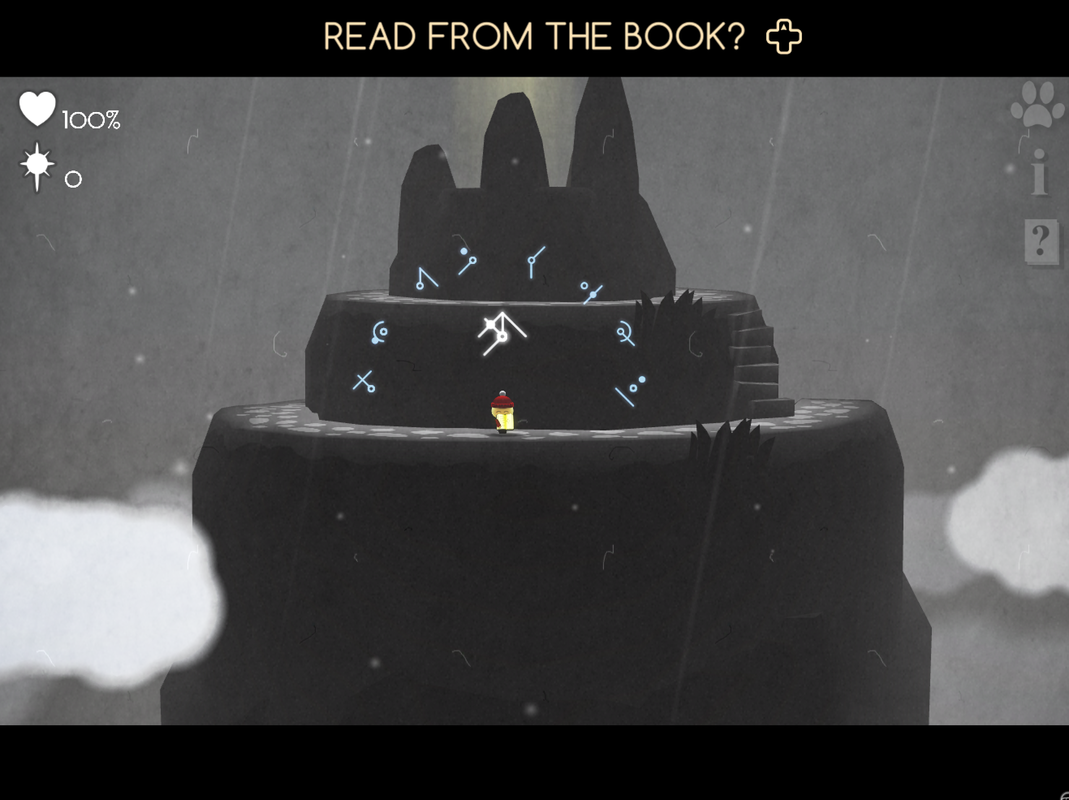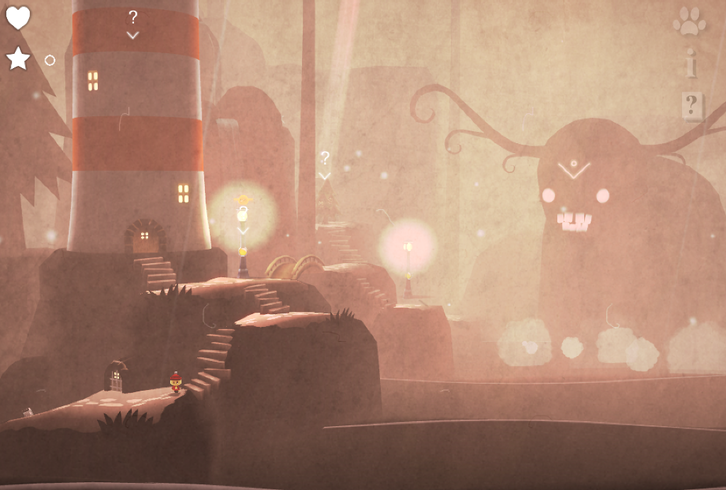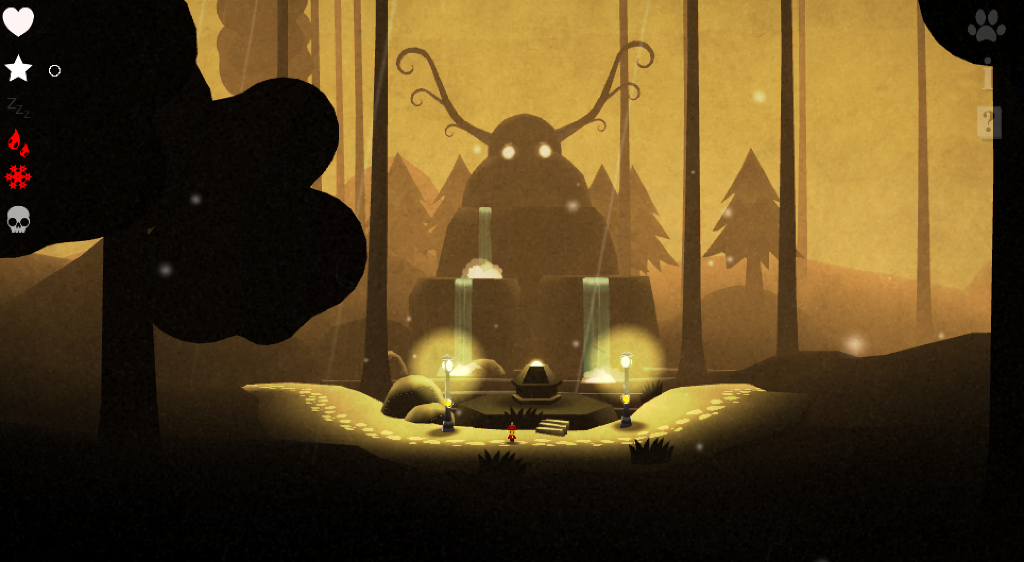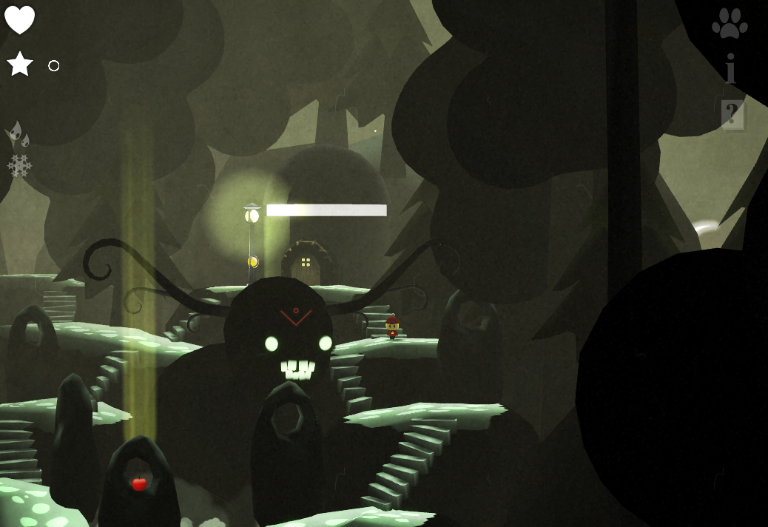|
An Explanation As anyone who knows me will attest, as an artist I have a thing about bunnies. For Lynch it was 'the eye of the duck'. For me, it's twitchy noses and floppy ears. Don't ask me why - I have no idea. Some years ago, I made this piece for my wife, Kara. It's fairly minimalist, which, for me is critical as I'm an indifferent artist and if I add too many elements, my amateurishness reveals itself like a weird uncle at a children's birthday party. Speaking of weird, I also discovered this cryptozoological oddity some years ago. I have no idea why anyone created this. Is it meant to be scary? Funny? What? No idea. Regardless, it's an image that seems to creep into my mind and sit there like an earwig determined to live up to an urban legend. Some years ago on a visit to San Francisco, I put a coin into a plastic-egg-with-toy vending machine and received a weird plastic rabbit with horns. For some reason it terrified me and I actually had to get rid of it because its strangely impassive eyes and antlered visage seemed more aligned with the infernal than with childhood joy. Nevertheless, horned bunnies have made their impression upon me, like... no I'll spare you more poor similes. Regal Street Art In a non-bunny turn of events, I discovered the street artist 'Koralie' in 2009, thanks to the lovely book Pictoplasma. A lot of her work is like this. For me, there's something wonderfully noble and goddess-like to these images. Her figures are usually in a posture of quiet contemplation, which lends them a calm majesty. When I saw this, I immediately... thought about a bunny variant. Yes, I know, it's a problem. I have pills and they help sometimes. And Now All these odd bits and pieces finally amalgamated into a bunny-demon thing. It's sat in my head since I started this project years ago. She's finally in the game. Her name is Felorn. This is the waterfall area, where she lives. I hope you like her. She has a key role to play in the game.
7 Comments
All Things Groovy! Nope. That's not me. I've never been described as such. I also don't live in 1965, so it's not such an impediment to my self-esteem. What *is* groovy is that lots of progress has been made. Movement between regions is working (if a little clunky), the Book is in (and working), and some Demon presentation work has been done (but nowhere near ready to look at just yet. So, without further ado, I offer a couple of movies to show how things are going. If you have any questions, leave a comment and I'll get back to you.
That's all for now. I'm not going to show many more environments as I don't want to spoil the game. Next week is dedicated to refining the Demon summoning. It's horribly complicated and requires a lot of cinematic stuff I find a challenge. Wish me luck!
No, Really
For once, I'm not being figurative. I've spent the last two weeks in Arizona, New Mexico and Colorado. More accurately, I've spent that time in a car going through those places while staring out of a window. It was very picturesque. And hot. And frequently horribly vertiginous. While I was away (it may have been while I was fearfully clinging to a tree by the Grand Canyon), I was informed that Spellrazor was Greenlit. This was a considerable surprise to me, as I had assumed the game had pretty much all the attention it was going to get. I actually said, "Huh...?" So What? This is my first Steam game, which is quite exciting, and it means I get to make a brief return to the world of Spellrazor - not for long, but for long enough to ensure that people who find it on Steam feel it's worthwhile. There are some annoying bugs to fix, and a bunch of integration work before I can call it properly 'ready for launch'. I'm considering making it free... or $10 at most, just to cover my accountancy costs. In addition, I have a couple of nice ideas that won't take long to implement which will make the game a little more special for the Steam release. More on that as it is implemented. What About BeMuse? BeMuse is still going strong. I've was adding the cottage interior today, up until I got the news that Spellrazor's page was ready to be set up. So, bear with me - BeMuse will be back to full-swing pretty soon. GDC As a final thing, I plan to try and sort out a GDC Indie Summit talk for GDC 2017. I was planning to do something based on my 'Black Boxes' post a while back, but if anyone thinks there's anything they'd like to hear covered, let me know. For now, have a good weekend, and I hope to see you on Steam at some point! What the Hell, Dude? What the hell To those of you hoping for BeMuse and then smacking your head into a desk with frustration at news of delays or subsequent game-shelving, this blog is for you. I shelved BeMuse to gain a fresh insight into the game, and to fulfill a small ambition I had to make a creepy, mythos-filled game I'd have loved to see in an arcade back in the '80s (that game was Spellrazor - it's free, so go and download it and see how far down the rabbit hole you can go). With that past, I took the opportunity to rethink a bunch of things, alter the look, simplify my workflow and so on. I'll quickly run through bits of the process and where they led, and how I got to here. Which is a good place. Here are the things that went wrong: - Choosing the wrong technology, with an unclear platform - A muddle of ideas - Stubborn insistence on an 'unknowable' magic system. Tails Wagging DogsBeMuse began life as an iPad game. I wanted controls to be simple, but I wanted the game to be in 3D. I really didn't want to create another puzzle-platformer, but I also didn't want it to be top-down, and really didn't want a virtual joystick on screen. As such, I got obsessed with a weird spline-based movement/navigation/rendering system that allowed the player to move in 3D using simple 2D controls. It sucked. It led to weird, worm-like landscapes that all looked the same. It led to clunky, unpleasant movement when you moved from one spline to another. It forced interactive elements of the game to be spaced out in order not to interfere with the generated geometry. This meant that it took ages to move from one place to another, which meant speeding up the character, which then made the game feel weirdly hyperactive... which it wasn't. At the same time, I wasn't totally sure whether the game was primarily going to be on Steam, or the App Store, so I'd solve the problem by adding joystick/keyboard support... and then have to ensure the play experience was the same with a touch screen. Finally, I lacked any 3D skills. As such, I flip-flopped between platforms, 2D and bits of 3D, making headway in, then hitting a wall, re-routing and then doing the same thing from a different direction. This flip-flopping cost me months. Worse than that, it constantly hid the other issues getting in the way of the gameplay. The GameOver the last couple of years, I've made about 4 different versions of BeMuse. I made a simple boardgame. I made the weird spline-based PC game. I made a text-based skeleton on an iPad, using the amazing Codea. I made a hybrid of the wormy and iPad-ey game using the same tech I originally created. They all sucked. In different ways. The one that sucked least was the text-based iPad game. Although it looked exceedingly primitive, and was brutally hard, it got the idea across enough for people to decide they liked it. At least for a while. This was mostly due to the fact that the text allowed me to focus on getting the right messages across to my players without having to re-write shaders for the gazillionth time. Magic I have quite strong thoughts about magic in games. By and large, I hate it. I think it's usually just a convoluted way to introduce guns, or modify movement (Jeff Howard writes about this in his excellent book, here). George R.R. Martin once said that once magic becomes a force that can be manipulated with any reliability, it becomes science. I feel it's even worse in games, where we're always at pains to make sure people understand *everything* so they can use everything as a tool. For me, this destroys the joy and mystery of magic. A complex interface for doing something simple isn't magical. It's annoying (see Black and White). A good magic system should give you a basic shape or set of rules, and then allow you to explore them and understand the ramifications. Portal's Portal-guns are better 'magic' than most magic in other games. I can name about 4 games with interesting magic systems; Heavy on the Magick, Hadean Lands, Eternal Darkness, Unreal World. I'm hoping BeMuse becomes a fourth, and I'll go into more detail with more pics in a later post. BeMuse's magic is a bit different from anything else, because it relies on you understanding the entire world around you. The lighting level, the weather, the time of day, the phase of the moon, the wind-direction, and so on. You're given a spell-book at the start that tells you how to cast spells. Successfully doing so is another matter entirely, and the Demons in the world add an extra complication. A New Approach, a New LookSo, this time around, what's going to be different? Well, for starters, I came up with a new look, a new movement system, a new set of shaders and a new attitude. These were the first test pics/palette-tests. Yup. It's a very 2D looking picture isn't it? But I've not been idle. I learned to make 3D art. Specifically, I learned to make 3D art that preserves the look of my 2D artwork, without the hamstringing that resulted from mixing 2D and 3D before. I also rewrote all the shaders from scratch. Previously, when I put an asset in the game the shaders (which were trying to make my 3D stuff look 2D) distorted the colours so much that it became an endless back and forth of pain and misery. This time around, I got them right first time. And best of all: It only took me about a month and a bit to get from nothing to where I am now. Movement is pretty much final (if quite strange). Rituals work. Navigation works. Even my 3D animation works. Here's a couple of little 'slow screenshots' of how the game looks. I hope you like it. There's more to come. *The Demon's not final, BTW. No complaining just yet. The post says it all. Spellrazor is now on Steam Greenlight here.
Please give go there and give a friendly 'thumbs up' if you'd like to see continued development of this strange little game. For those who don't know, version 0.9.14b is now out for free on itch.io and Game Jolt: http://dene.itch.io/Spellrazor http://gamejolt.com/games/spellrazor/123648 Rejecting Black Boxes: Or - 'Punk Approaches to A.I. and Navigation for Indie Developers'10/23/2015 Introduction of Manifest Pomposity Far back in the mists of time, when games were a new thing, and nobody knew what they were doing, before 'best practices', 'accepted algorithms' and 'standard toolsets' and 'weird sets of words in quotes for no good reason', people were making some amazing games. Download Mame and - after deleting all but about 20 of the quadrillion games it comes with - you'll see that what you're left with is A-MAZING. No, really. In those days, developers looked at their game's requirements and developed exactly what they needed. Nothing more, nothing less. Today, many developers solve their problems by putting together a gigantic lego-stack of black-boxed rendering, physics and A.I./Navigation technology, believing there is no reasonable alternative. I'm going to suggest that there are alternatives to this approach. I'll focus on Spellrazor's A.I. in particular, and hopefully make you consider whether middleware, A* or State Machines are really necessary in your case. A Butterfly's Inner World: Or 'Random Fable Anecdote' In Fable 1 we had pretty little towns and villages filled with complex A.I. behaviour. Try following one person around a village for a full game-day. You'll be impressed at what they get up to. Did you know that villagers get into bed? I don't mean just lie on top of the beds. I mean actually fold back the sheets and get into bed. No? That's because nobody ever went into houses at night because they were locked. Oh, you could break down the door but nobody ever did, and you'd get arrested if you were spotted anyway. We actually discouraged players from seeing it. (Note: we dropped the entire behaviour set for Fable 2, along with many others such as children's school days. Nobody noticed) Earlier in the game's development we found out that the villager A.I. was taking a ridiculous amount of processing time. We added various logs and other debugging tools in order to track down the problem. It was only after someone's careless sword-swing smacked into a butterfly that we understood what was wrong. The butterfly yelled 'Help' and then A* navigated its way to a village exit whereupon it disappeared up a trade-route. Someone had made the default behaviour 'human'. I mention this as an illustration to hilight that 'Best' is not always 'Appropriate', though many would have you believe so. They should be flogged. Gently. With something moist. Spellrazor: Or 'What Does Your Game Actually Need?' Spellrazor is my ridiculous '80s game resurrection project. It's a top-down rogue-lite dungeon shooter for PC and Mac with 27 fire buttons and a host of different enemies. The game goes into a kind of bullet-time when you're in danger, allowing you to use those those 27 spells tactically - even in the midst of a complex firefight. Nono. Ignore the picture. It's not the same as actually playing the game in all its throbbing neon-tinged glory. Just pretend I didn't put the picture up at all. Keep scrolling. Bit more. Stop! That's better. Spellrazor is of the same school of thought as old Williams classics like Robotron and Defender. It's sinister, it's deadly, and its enemies are total bastards. When I started, I had a clear idea of what I wanted game-play to be like. I had a little scenario in my head that I used to test the suitability of anything I wanted to add: "Okay - on the other side of this door there are 3 flies and a security bot. I'm out of [Z]ap, so... Oh! I have a [J]ump! I can hop over the wall and take out the flies, then use a single arrow followed by a [Q]uake to take out the Security! Here we go..." I find this kind of exercise useful to figure out the verbs in the game. In Spellrazor's case 'Panic' actually came up too often, so I changed things around a bit. Anyhow, as you can guess from the description, it's a kind of 'breach and clear' game with plenty of opportunity for things to go horribly wrong. For this scenario to work, I required three things:
Embracing Retro Simplicity: Or 'Zelda's Artificial Stupidity' Seeing as I was in an 80s mindset, I didn't want to use A.I. that led to perfect behaviour. I wanted the retro feel to permeate right through the game - after all, the low-tech approach was good enough for some of the best games ever made: Defender and Robotron. So it should be good enough for me, right? But wait! Some of you are thinking 'Those games were really primitive! There's no justification for that kind of tech now, in 2015'. Okay, so how about Zelda? If you've played any Zelda game since Link to the Past, you have probably been impressed by the puzzle design, dungeon design, overall 'feel'. But what about the A.I.? Can you remember being hit by an enemy other than a boss in Zelda? No? That's because they were games designed to make you feel good when Link hit or blocked an enemy and not the other way round. The last thing you want in a heroic quest is artificial intelligence that allows enemies to defeat you. If anything, heroic games require artificial stupidity; enemies arranging themselves to create the best, most heroic narrative possible, only providing the illusion of intelligence and some kind of understandable risk-reward. Remember the butterfly? Not that. See - I promised it would be relevant. Most A.I. tutorials seem to work from the Platonic idea of creating perfection in pathfinding and logic (in the form of 'A*' and Finite State Machines) with the assumption that you can always work back from this in order to create personality/flaws. While a perfectly usable approach, it isn't necessary, and is potentially an over-engineered solution for the problems of your game. I'm going to illustrate this by describing the behaviour of a couple of Spellrazor's units. Spellrazor: Or 'Using Map Generation to Your Advantage' Spellrazor has a hierarchy of navigation. 1) Room/Door-based: moving between neighbouring rooms using doorways as targets 2) Tile/node based: moving from grid-square to grid-square at high or low granularity 3) Physics: acceleration, velocity and inertia Using 1) requires 2) and 3), using 2) requires 3), and 3) can be used by itself. Paired with some simple behaviours, this is sufficient to create enemies that are satisfying to engage with in Spellrazor Creatures have 3 notions: TargetPosition, GoalPosition, and - rarely - a Sidestep direction.
After creation, my map hierarchy is:
I'll now show how this information is used to elicit the appropriate behaviour for 3 enemies. Fly - Physics Based Navigation Only The fly is the simpest of the enemies. It is a little homing missile. It uses no navigation information at all. The fly's behaviour is:
Flies tend to bunch up quite a lot and slide around corners (look at the original pic of Spellrazor). These swarms break up a little in open spaces due to the random angle osciallation. This is a good thing. It feels right. Flies are fairly lethal as they are fast and tend to arrive in groups (which form due to their behaviour rather than intelligent placement or other algorithmic flocking). Despite their simplicity, flies are satisfying to kill because players need to precisely control their positioning in order to accurately target them. Swordsman - Tile Based Navigation The swordsman is one of few enemies that require more than one hit to kill. It is also one of the deadliest, despite having no real notion of where it is in the map. However, because this game focuses on players hunting down enemies, this lack of intelligence doesn't matter. The Swordsman's behaviour is:
Security - A Classic Navigator? The Security bot is, by far, the nastiest enemy in the game. It teleports into the corner of the target's room, and once it has arrived, it follows the target mercilessly, belching out hundreds of bullets once in range. It is really nasty. It is also the most complex A.I./Navigator. "Oho!" I hear you cry. Because you are an Edwardian gentleman. "Oho! I spy a case for complex navigation, perhaps even A*? You are bested!" I'm sorry, Mr Mutton Chops. This is a punk article about punk coding. Take your weird elephant's foot umbrella stand, grab an absinthe and shush. The above diagram is definitely not drawn in crayon. It does, however, illustrate the route and decision points of the Security bot, and how it gets between them.
Despite the apparent complexity, its rules are fairly simple:
Now, because blockages are never dead-ends and the map is relatively simple (rectangular rooms with big chunks taken out of them to add detail) this simple behaviour results in a devastatingly smart foe. It tracks you across the entire map, yet only rarely does it think about anything other than the nodes immediately around it. Even when it does have to do a search, it's a breadth-first search of around 30 rooms and thus close to instantaneous. You'll notice that even with this creature, there is no state-machine! The only extra detail recorded is the Sidestep direction. Conclusion At no point have I wished any of my enemies were smarter or more complex in their behaviour. Spellrazor isn't 'The Last of Us.' I'm not trying to convince the world that my little robots are people. They're not. They are dangerous little robots. They are predictable when necessary, and each requires very different approaches when encountered. These are what Spellrazor needed, not what was proscribed by someone else's vision for another game entirely. A Final Odd Music Analogy I love early electronic music. I have a particular fondness for the work of Louis and Bebe Barron on the Forbidden Planet soundtrack. The Barrons didn't have an orchestra or synthesizer at their disposal. Instead, they fashioned small, flawed circuits that often burned out while recording. They warbled, they whooped, they sputtered and crowed and nobody had ever heard anything like it. I feel we've an opportunity to do the same thing now. The imperfections and flaws in our algorithms are part of our games' personalities and key to the punk developer spirit. If Johnny Rotten could actually sing, the Sex Pistols would have been just another pop group. Our flaws should be embraced by ditching black boxes and actually learning to do stuff ourselves; messily, clumsily, but originally. ...if it's right for the game... Spellrazor can be downloaded for free at: http://dene.itch.io/spellrazor Dene Carter can be found on Twitter as @Fluttermind Those who know me are aware that BeMuse has been slowly driving me mad over the last few months - if not longer. I'm not happy with the way the gameplay clashes with the visuals. I'm not comfortable with the non-tactile movement. I'm concerned that I've ended up with a one-shot 'experiential' game despite stating that I'd never do that again after Incoboto. Every day, booting up Unity takes a little more out of me, and each evening leaves me feeling like I've heard the gears of the infernal realm grind away my resolve. To overstretch the metaphor, it's been hell-ish*. *Note: 'ish' because real hell probably doesn't involve being an indie game dev with sufficient food, a house in the Bay Area, and people who care about him. There's a Winson Churchill quote I'd like to use here: I've seen this quote used by people working on long, difficult projects. I've seen it used by indie developers. When times are tough, money is tight, or a set of mechanics aren't working out, it rises up once more to provide an inspirational push. "Just a bit further and you'll reach it!" "Come on, all that stands between you and success is hard work!" "It's tough, but it'll be worth it!" But there's a problem. While its 'man up' message is useful where one merely needs to grind toward a (hopefully inevitable and positive) conclusion it's a terrible mantra for doubt-ridden, uncertain creative work. Yet I'm guessing even now that some young indie has this as their backdrop, reminding them that if things aren't working out, they should merely keep digging that hole they are in a little deeper in order to strike gold. Hell and 1% Inspiration As the 'hole' comment above illustrates, there are other variants,such as: "Genius is 1% inspiration and 99% perspiration" This, too, suggests that sheer hard work and determination will pay off. You're supposed to read: "Even geniuses need to work hard for their ideas to come to fruition, so you work hard, too, and you're 99% there." Apparently, difficulties merely need sufficient grinding of teeth in order to turn into success - or at least to make way for another 'Genius 1%' moment to pop in. In truth, the 'Genius 1%' may pop in and out throughout a project. Sometimes a new 1% pops in and points out that part of the other 99% of work you were doing was really stupid and pointless. Sometimes a 1% will pop in and lie about how cool and successful it is, eventually revealing itself to be just an additional '99% of perspiration' in disguise. The problem is that they all look the same, so it's often hard to be sure which is which, and when the time for hard work alone has come. The AAA Mindset So how does AAA cope with the variability of the 1% Genius element? It doesn't. It does its very best to eliminate the vagaries of the 1% and pushes that 99% to a full, hearty, knowable 100% of perspiration (Keep Going!). A modern AAA studio's continued existence relies on getting rid of that tricksy percentile. This is understandable, because for them, the fail-state is unthinkable; publisher cancellation and, after some fraught months, a purge of the entire team. I've worked at AAA companies for decades and this kind of thinking rubs off on you even if you don't realise it. Like many, I've been trained to believe that every project is a marathon... run at the speed of a sprint, or at least a wild, sweaty jog. "Working damned long and hard is the only way to make something successful. Failure isn't an option." My previous game, Incoboto, was built with this philosophy. It was successful, reviewed very well, and was largely a work fashioned by grinding my way through an enormous workload, entirely by myself, in isolation, over a 22 month period. I was incredibly pleased with the results, but it reinforced the wrong-headed lessons I outlined above. Embracing the Indie Mindset (finally) 'Real' indies don't think this way. Indies often haven't learned the big, adult lesson about grind and grit. They mostly expect to fail in one way or another. And when they do, they shrug it off and move on. Even those agonising over a game for years are usually fairly sure their game works in principle even if it isn't perfect. They've already thrown away more good ideas than I've had published games and that's okay. As an indie developer, what should I have learned instead of my big AAA lessons? Well, here are 3 off the top of my head:
So, having admitted that I've learned some bad lessons, and finally realised what the correct lesson are, how am I planning to change things? Well, this comes in two parts. Spellrazor A couple of weeks ago, my wife was required to attend a work event in Mexico. It was horribly hot and humid, so - as a massive introvert - I decided to hide out in the air-conditioned hotel room for the 4 days we were there. During that time, I worked on a weird old game I've considered reviving for many years. It's called 'Spellrazor'* *yes, it's a deliberately cheesy title - as befits a child of the 1980s The cabinet blurb would be: "Spellrazor marries the procedural generation and permadeath of rogue with the visuals, tactile feel and action of games like Robotron, Defender and Berzerk." "It's a roguelike shooter with 26 weapon buttons. Each key on the keyboard represents a spell. You kill things, you collect spells (in the form of letters) and you can use these at any time by pressing the appropriate key." When I was about 12, I saw Defender and fell in love. In its brightly pixelled worlds I discerned a future filled with delight and wonder. I have a particular love of games from this period (1980-1983). They were frequently cold, cruel and utterly uncompromising. Spellrazor is a game from the same school of philosophy. I released versions online last week, and friends of mine are already playing it. Early signs are really good. Unlike BeMuse, there's no requirement of secrecy or of confused players trying to figure out 'what the hell kind of game is this?'
For those patient enough to have waded their way through this little post, you can follow Spellrazor (and play early builds) on Tigsource here: http://forums.tigsource.com/index.php?topic=50678.msg1184968#msg1184968 BeMuse For now, BeMuse is going on a shelf. I don't think it's permanent. I hope to return to it at some point in the future, with the verve, joy and speed of progress I'm experiencing with Spellrazor. In the meantime, if anyone is interested in playing the weird text-heavy skeleton (not the graphical game) of BeMuse, please contact me and I'll be more than happy to share. Thanks for your time, and for your interest. Skeletons See that? That's a skeleton. Useful things, skeletons. They stop you from focusing on skin. Skin is messy, clammy, complex, and superficial. It tears, gets stretch-marks, bleeds and does all manner of unsightly, god awful things besides. In a game, the skin is often the thing that gets you past the fact that the game isn't very deep. In some cases, the non-game 'experience' is skin, and skin alone. That's fine, if you're trying to create an immersive semi-interactive artwork rather than something with rules, logic and the potential for mastery, but if that's not what you're doing, skin can just get in the way. In the case of BeMuse, I began with pure 'art' ambitions, but swiftly found myself feeling somewhat discomfited by this. I wrote an earlier post about the 'zone of meh' that exists between a pure art creation and a content/gameplay focused game. As a one-man studio, I feel it's often too easy to fall into that zone. I have too little manpower to create a huge game-world of content, and I'm not comfortable enough with pure 'art' pretentions to try and pass off something that lasts for one hour and ends with the word 'Fin' as a worthy purchase. There's nothing wrong with that, but I'm just not built that way. GDC and P.T. Back in March, I took BeMuse to GDC to show a few friends and other indies. It went relatively well, but the general opinion seemed to be twofold: a) 'Love the way it looks and feels' b) 'Hate the fact that I have no bloody idea what's going on' Part of me took pride in b) - I always wanted the game to be wilfully obscure and wrapped in multiple layers of mystery. I played the P.T. demo a while back and felt that it was a proof that my weird attitude to design on BeMuse was vindicated. I was confident up until I tested P.T. on my brother, Simon. Here's how that went:
Simon: "Hmm." Dene: "'Hmm?' You mean 'Hmm! Genius!'" Simon: "No. 'Hmm.' As in... 'I have a mixed feelings about this.'" Dene: "How so? It's a game that defies you to understand it! Isn't that refreshing?" Simon: "No. That's not true. It's a game that pretends to defy your understanding. It is, in fact a 95% linear train ride of well-orchestrated, creepy jump scares... and an obfuscated 5% at the end that defies both understanding and patience." Dene: "Hmm." Oh Dear To be honest, making a game that is defiantly impenetrable is actually quite hard. A lot of the time you end up making decisions entirely in order to maintain mystery rather than to improve gameplay. It also makes it harder to figure out what to cut and what to keep. When you've wilfully refrained from bounding or defining the shape of your work, it's all equally cuttable and keepable. This is far from the best scenario for getting a game out in a timely manner. Add to that the fact that every alteration requires a huge amount of work in order to not break the existing code-base, to work with all the other systems and so on, and you can probably imagine the pain. Which brings me back to skeletons. As soon as GDC was over, I made a decision. I replicated the main systems underpinning the game using Codea on the iPad - it's a little game development system I absolutely love. Oh, ironically, I also converted that codebase to love2d in order to enable distribution to friends and family. No bloated Unity engine. No time wasted trying to fix something that looks distractingly broken but which, in fact, doesn't help move the game design along. We did pretty much the same thing in Dungeon Keeper, and it paid off then. Conclusion The game will still look exactly as it does in the screenshots. If you're a fan of the aesthetic so far, you can be confident that this won't change. If you're a fan of the concept, then you can also relax. The testbed is allowing me to keep true to my initial design goals, and to iterate quickly and efficiently. If you have more questions, or are curious about the current skeletal framework, then feel free to email me. The game is coming along nicely, and my rewrites of several of the critical systems are pretty much over. This is the period when I stop building systems for a while, and start trying to find ways of showing the systems off through building up the environment. As GDC looms near, and after the delays and horrors of last year, I'd like to have something I can wave in front of people: a small islet with a couple of ritual bits and pieces, just to see if people are getting to grips with the movement. interaction and inventory. It's time to stop being quite so precious. Still precious... just less so. Phase 1 - Testing testing
Once GDC is over (and the inevitable bugs and broken things have been fixed), my plan is to put up a web-player based version of the testbed here so people can give me feedback, bitch about the controls, movement etc. and let me know how the game feels to them in terms of mood and tone. Although it will not be a full game (just a very limited testbed of very specific systems) the feedback will be incredibly important. While people are prodding and poking around that, I'll be getting on with squishing some environments together and finalising some ritual stuff... ...which will lead to Phase 2. Phase 2 - Finally, Asking for Help I make my games almost entirely solo. I have had some friends help out with bits of organisation (as in 'for the love of God focus on this bit!) and art advice, but 99.9% of the time, it's just me sitting here by myself, hoping that I'm not going completely out of my mind - or that if I am, it adds something interesting to the game. It's quite painfully solitary, and - this last 12 months in particular - has been really, really hard. I said I'd ask for help at some point. It's at the root of the name 'BeMuse' (yeah, I thought I was being clever). Now that getting stuff into the game is a lot easier, and the context is hanging together, it seems a good time to start living up to that name. I want to do this for more reasons than just improving the game. I'd like to get better acquainted with the audience and let them feel they have an ongoing hand in making this something special. Here're some ways you can help. 1) Who Are You? You don't have to share your name (some find it creepy), but I'm interested in what brought you here? What are you most looking forward to over the next 6 months? What music do you listen to? What do you look for in games? Art? Literature? Other people? Did you like Incoboto? 2) What Do You Expect? I remember looking at screenshots of games when I was growing up, and - with very scant information - imagining how that world was going to feel. 90% of the time, games weren't as good as I expected. In some cases they were different, but so much better than I could have hoped (Ultima 4, please put up your hand). So, tell me how you think the game is going to play. Tell me what aspect you're most looking forward to. Tell me how you think it's going to feel. 3) BeMuse - What Would You Like to Share? BeMuse is potentially endless. As long as there is room in the sky for new Wishes, there'll be room for new rituals, secrets, locations and discovery. So, send anything: a sketch of a weird rock. A scrap of poetry. A name that tickles your particular fancy (the campest phrase in the English language). A weird sentence. Anything you think could have magical, inspirational significance. We did this with Fable and got the SandGoose. I think we can do better. I think post-comments are a fairly clunky way of handling feedback, so if I get enough interest I could start some threads in the forums and see what happens. As ever, you can mail me via the contact form and I'll always get back to you. Thanks for your time - I know that in this period of our history, attention and caring are more valuable than dollars, so I appreciate it. 3D or not 3D Those of you not following on Twitter probably haven't seen much of what is going on with regards to BeMuse's evolving look. In November I made the decision to try and make 90% of the game assets full 3d. One of my aims with the game was to create a world where the interaction of the camera and environment aided the sense of mystery and revelation. A 2d camera (i.e. no rotation - only panning in 2d space) is all well and good, but nothing seems as visually exciting to me as something coming into view that was 'just around the corner' a moment before. This decision has slowed down some asset creation, but it's also refocused me on using shader tricks and simple assets rather than trying to do awesome art myself (which I've historically found difficult) or hiring other people (which always takes a lot more time, effort and nervous energy than you might expect). I'm going to refine the lighthouse islet at some point next week and then see if I can put a little video of the thing moving up here. For now, here are some stills. I'm still not happy with the 'discovery' methods for hidden objects and little stories, so I'm going to rip some stuff out (again). Doubt, Statistics and Magic
I've redoubled my efforts to bring mystery back into BeMuse. My original aim was to create a 'magical space' for experimentation that would sometimes yield results: in this case, opening up more magical spaces for experimentation. The idea was that I would build/generate a ton of rituals which take into account many factors like the state of the moon, what you'd burned in a fire, and so on. This approach raises an issue: any magical activity with a guaranteed result is no longer magical. It is just science - or at worst - mechanics. If cause 100% leads to desired effect then you've eliminated doubt, and thus eliminated mystery. On the other hand, any game activity that has a cost (in terms of scarce resources) without a guaranteed return has the potential to be really annoying. Many games use player clumsiness/skill to add a randomising factor (for example - it's quite possible to play Dark Souls and never get hit - it's just unlikely). Others use doubt and statistics... but then give show overt statistical probabilities to measure success: Damage-Per-Second or Average-To-Hit etc. Players of these games will consider and compare their tools and try to minimax the items they use to better aid them in their struggle. I can't think of a single (modern) game that doesn't give the player all the information he/she needs in order to make an informed decision. With Bemuse, I'm actively trying to stay away from certainty. I'm giving no statistical information. The plan is to leave that to rumour-mongers in the real world. But this approach has an implicit danger and an impact on gameplay. The Fear of Unknown Things If a low-feedback-gamble is an adjunct to the main game (e.g. something like building or picking fruit or whatever) then pure randomness can feel far more comfortable and appropriate ("Hey! I'm making progress in other bits of the game. I don't feel so bad about that bit of gambling I just did!"). In BeMuse, it IS the main game. There is no 'MacGuffin' activity. That's a constant struggle that slows my development right down and keeps doubt sitting on my right shoulder at all times. I keep wasting time trying to think of other activities to lessen the strangeness of ritual behaviour. Alternatively, I lose faith and start making the magic a mechanical toolset. The ultimate issue with a mechanical toolset is that once you know that you feed in a resource and then take steps A, B, C and D to earn your reward, a modern gamer wants those steps to folded together into a single action. E.g. rather than 'Mix ingredients A, B, C and D to create a potion' they want a single button labelled 'Make that potion from A, B, C and D with one click'. This disengages the player from the tactile, ritual behaviour and thus removes the sense of magic from the magic system. But it's also the 'right thing to do' in many circumstances. So, this dilemma is what causes my wheels to spin, my mind to race back to cowardly, well-worn alternatives, and the game to take much longer than necessary. If ever you find yourself wondering why it's taking so long the answer is either 'family illness' or 'this mental minefield'. It's not indifference, laziness or a lack of effort. Thanks for your time. |
AuthorFluttermind’s director, Dene Carter, is a games industry veteran of over 25 years, and co-founder of Big Blue Box Studios, creators of the Fable franchise for the XBox and XBox 360. Archives
April 2022
Categories |



